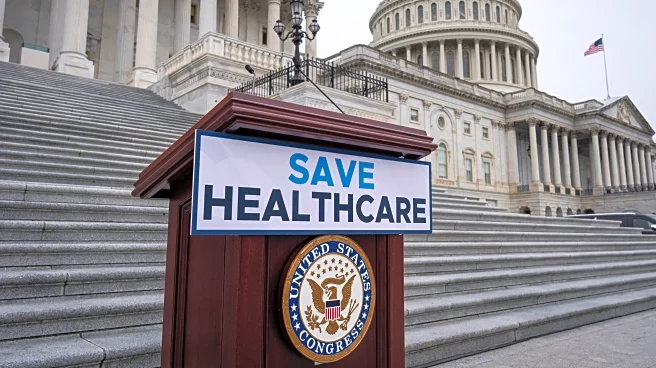What's Happening?
The U.S. healthcare market is experiencing a significant divergence in cost trends between public and private sectors. While Affordable Care Act (ACA) premiums are set to rise dramatically, with some insurers seeking increases up to 43%, self-funded employer plans are showing stable costs. The premium hikes are attributed to increased patient utilization, worsening risk pools, and price inflation. In contrast, data from self-funded employers indicate a more stable market, with modest increases in medical and pharmacy spending. This disparity raises concerns about potential spillover effects on commercial contracts and overall healthcare costs.
Why It's Important?
The sharp increase in ACA premiums could lead to a rise in the uninsured population, as individuals and employers struggle to afford coverage. This situation may result in higher costs for uncompensated care, which could be passed on to all commercial contracts, affecting the 179 million Americans with job-based coverage. Employers may face increased financial pressure, potentially leading to higher costs for employees and reduced access to healthcare services. The situation underscores the need for proactive measures by employers to manage healthcare costs and mitigate the impact of rising premiums.
What's Next?
Employers are advised to closely monitor healthcare cost trends and take steps to protect their plans from potential spillover effects. This includes staying vigilant for signs of network contract disputes and hidden pricing strategies. As the healthcare market continues to evolve, employers may need to explore alternative strategies to manage costs and ensure access to affordable healthcare for their employees. The ongoing challenges in the ACA market may also prompt discussions on policy reforms to address the underlying issues driving premium increases.











